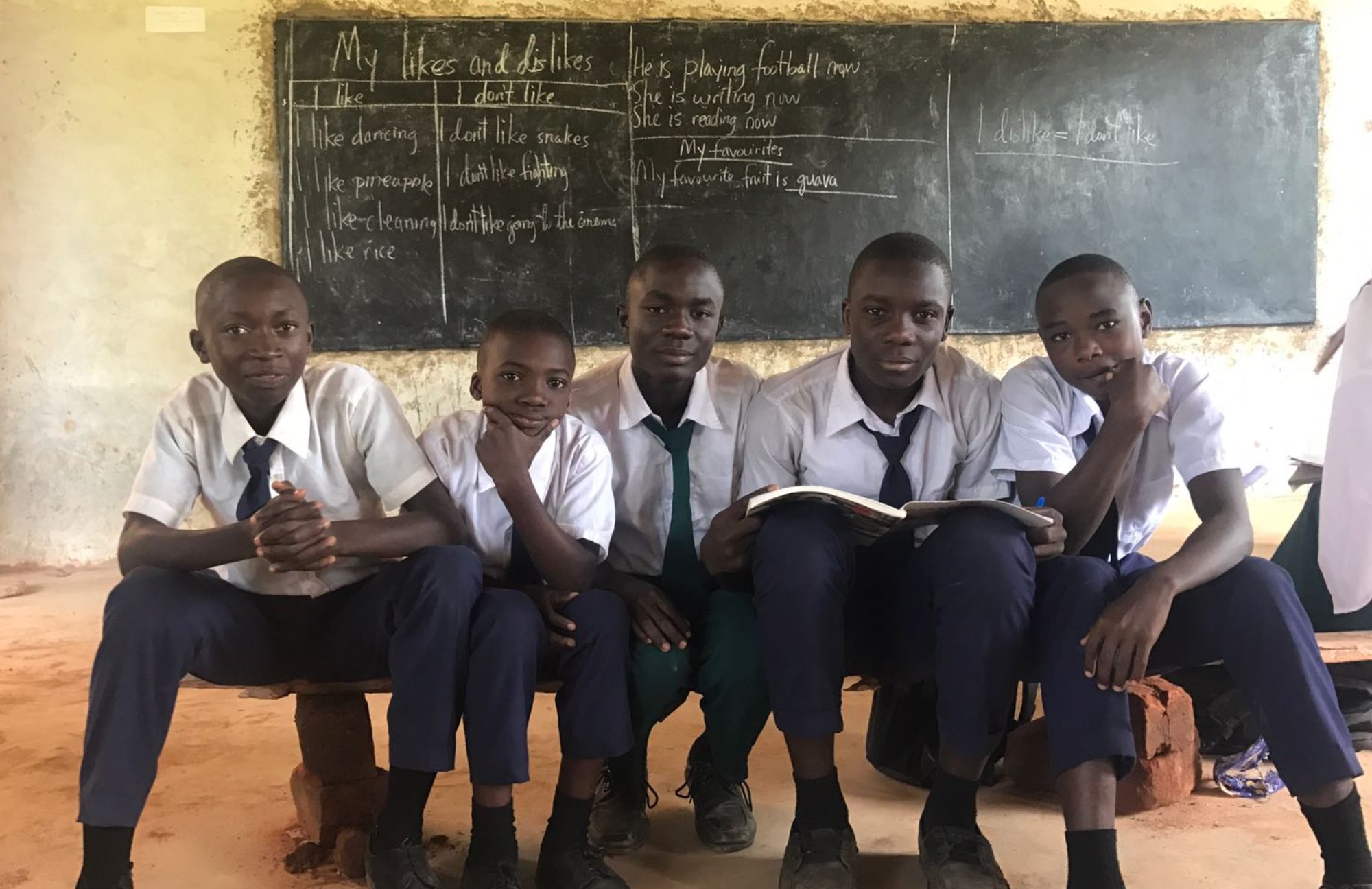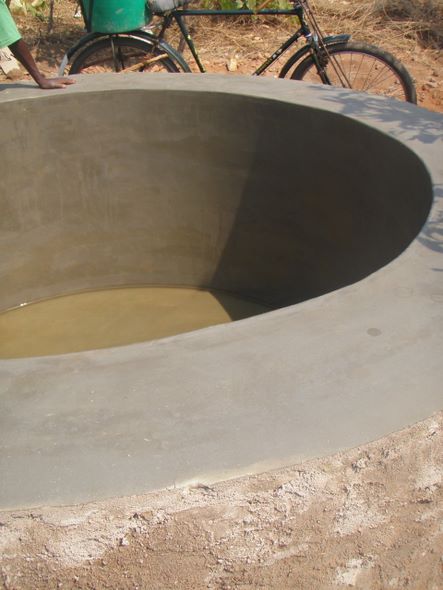Well – as I suppose you may have surmised, progress was a little slower than I was hoping it would be, but not by much. In fact, in the 3 weeks that I was there, I never imagined that as much would be done.
First, Isaya (the builder) had architectural plans drawn up in about one day. With the plans we also got the building permit. Having that out of the way, we met with the land office and the ministry of education and confirmed with the village government that the land was ready for building and it had been approved by the villagers.
Next on the agenda was the big materials shopping day. I gladly handed over almost 3 million shillings so that Isaya could take care of this on his own. He bought aluminum, wood, tools, 100 bags each of lyme and cement, nails and other odds and ends for the initial phase – four classrooms and two offices. The transport of this material alone – in car part of the way and on the backs of the men up the final stretch of steep rocky path – was quite a feat!
Then, I paid Isaya his advance – his fee and money to pay his four laborers. Much of the work is donated by the villagers, such as schlepping sand, stones and water to the building site, but obviously – the building itself has to be done by professionals. So, Isaya recruited able workers from Mgaraganza village who work alongside Isaya and his partner, Ahamadi.
The first stage of actual building was to construct the store room which would not only hold all the materials and be guarded around the clock, but would also be Isaya’s home during the project. He bought a simple grass mat to serve as his bed and there he plans to sleep until the project is done or the money runs out. Isaya lives in Mwanga – next to Kigoma town. Transport time including 30 minutes on the dala dala and a decent walk from Kiganza village adds up to about 1.5 hours, so it makes much more sense to stay on site (his choice), not to mention there is no worry about corruption (sale) or theft of materials. When Isaya goes home, his partner Ahamadi stays on site.
The next big step was to clear the land. They used pangas (machetes) and fire to clear the grass and trees that stood in line with the classrooms. The majority of trees will remain – which is unlike most secondary schools which are surrounded by little more than stones and dirt. Our shared vision is a school with shade and indigenous trees for future instruction on the local environment. Jane Goodall Institute is happy to have our school implemet its own Roots and Shoots club when the students are ready.
After clearing the land, they set to work quickly on the foundation and a water tank. The foundation is constructed of cement and lyme, mixed with sand and the big stones that the villagers collected. The tank is a work of art. The smooth finish on the inside and rim of the tank blew my mind. This tank will be filled and tapped for water on site for the students.
Of course, my personal hope/goal for the school building this summer was to see at least one classroom fully finished before I left – but I should have set a more realistic goal. I only had about three weeks in the area. There was a lot that could have and should have been done before I arrived, but again ‘go to know’ – and now I know.
Lucas has the camera and had a training session on how to upload and email pictures to me. We’ve agreed that he’ll go to the site often and check/send emails once a week – a big change from last year when contact was sporadic because there wasn’t much going on at his end.
Of course, I’ll keep everyone informed as the school comes together. I know that Isaya will have a lot done in no time. He is equally committed to doing quick, efficient work because he knows – Form 1 built well means commission for Form 2, 3, and 4. I can’t wait to see our finished product!! And – I don’t even think it will take the projected 4 years! Wahoo!

